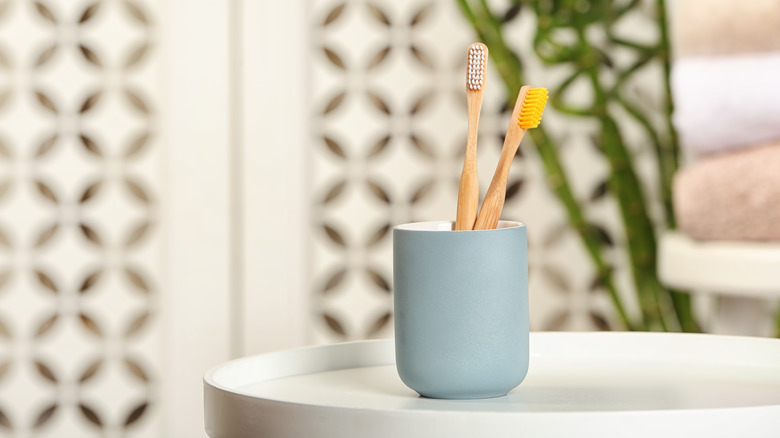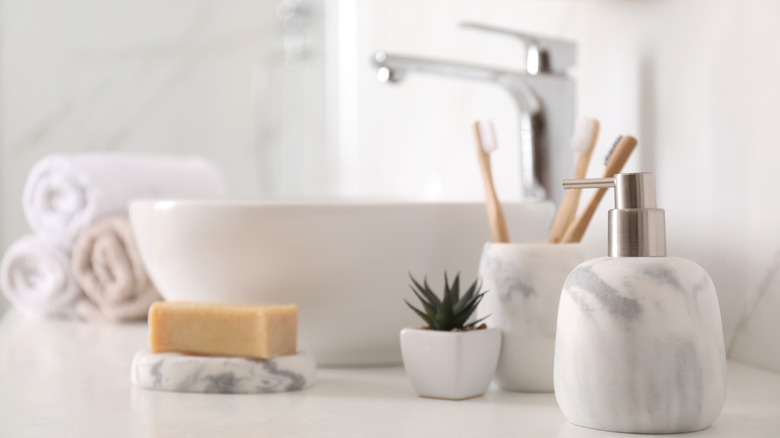Where You Store Your Toothbrush Matters More Than You Think
You might keep your bathroom clean, but no matter how clean you think it is, you can never get rid of all of the bacteria that live there. From your shower curtain to your toilet, a humid bathroom provides the perfect place for germs to grow, according to SafeHome.org. The idea of hundreds of microbes lurking everywhere might have you wondering about the safest place to store your toothbrush.
The first step to keep your toothbrush clean and sanitary is to store it in an upright position with the head of the brush pointing up, according to Jeremy Krell, director of oral health for quip. He told Martha Stewart that this allows the bristles to dry out completely. For this reason, you should not store your toothbrush in a medicine cabinet or a plastic case, because the lack of airflow may leave the bristles damp, which can allow mold and bacteria to grow.
Keep it away from the toilet and sink
Krell also recommends keeping your toothbrush nowhere near your toilet (via Martha Stewart). This is because flushing releases tiny particles including urine, fecal matter, and bacteria into the air (per Self). Some research suggests that particles can go as high as 2.7 feet after you flush. While there is little evidence to back up how far particles can travel away from the toilet after flushing, the consensus is that they can reach as far as 6 feet. To help mitigate this and keep the rest of your bathroom cleaner, you should close the toilet lid before flushing. In addition, you should also keep your toothbrush away from the sink because washing your hands can splash germs on it (via HuffPost).
So where is the best place to store your toothbrush? Colgate recommends a wall-mounted toothbrush holder in an area that is far away from any splashes. Furthermore, you should clean your brush by running it under hot water, or soaking it in antibacterial mouthwash or denture cleaner after each use. Replace your toothbrush after about three or four months, or when the bristles begin to fray (via Healthline).


